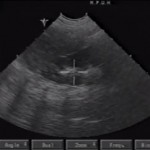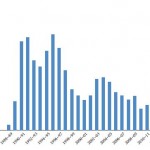Editorial: Evolution of extracorporeal shockwave lithotripsy (ESWL)
Much has changed since the introduction of extracorporeal shockwave lithotripsy (ESWL); however, in many ways the principles remain constant. This manuscript by Jagtap et al. [1] is a large series of patients over 25 years and encapsulates the changes in ESWL over that time. This paper has all the limitations inherent in a retrospective review but within this offers interesting data. In particular the use of two different machines and refinements in technique are eloquently described. This shows an improvement due to both the change in technology but also in the importance of modifications of technique. The particular factors improving stone-free rate (SFR) were; better localisation with ultrasonography and X-ray, better coupling and use of coupling gel, change in selection criteria for both the patient and stone, ramping up the power and a staff training programme. This emphasis on technique is especially pertinent in healthcare systems where mobile lithotripters are still in use. These are renowned to have lower SFRs than static machines, which may be due to the technical delivery of treatment as much as the efficacy of the lithotripter.
What is the future for ESWL? The paper reflects the perception globally that whilst the incidence of urolithiasis is increasing, the use of ESWL is not increasing at the same rate, particularly for ureteric stones, and they cite the potential factors for this. This has also been noted in the UK and our own recent review of Hospital Episode Statistics (HES) data even suggest the rate of ESWL has plateaued for both ureteric (3000/year) and renal (19 500/year) stones in the last 3 years [2, 3]. There has been discussion within the UK about centralising endourology services using the same model as for cancer, with provision of static lithotripters within those centres. This would potentially have the advantage of creating high-volume centres with quality being easier to standardise and monitor; however, this would have to be balanced against patients probably having to travel further to access ESWL. The use of Hounsfield units remains a topic of debate with conflicting data and limited clinical application [4, 5]. Optimising targeting to minimise tissue damage with maximal stone fragmentation remains a challenge and modifications to lithotripters with dual-imaging modalities, dual heads, alterations in shockwave delivery rate, control of respiratory effort and novel feedback devices have had limited success. Increasing levels of obesity within developed countries are a factor in the utilisation of ESWL, as there is a limit on focal distance. All of these factors along with the continued improvement in the optics, miniaturisation of ureteroscopes and advent of holmium laser have contributed to a surge in the use of ureteroscopy, despite publications and guidelines showing similar success rates [6].
Kay Thomas
Clinical lead for Urology, Honorary Senior Lecturer Kings College London, UK
References
1 Jagtap J, Mishra S, Bhattu A, Ganpule A, Sabnis R, Desai M. Evolution of shockwave lithotripsy (SWL) technique: a 25-year single centre experience of >5000 patients. BJU Int 2014; 114: 748–53
2 Turney BW, Reynard JM, Noble JG, Keoghane SR. Trends in urological disease. BJU Int 2011; 109: 1082–7
3 Withington J. Personal communication from Royal College of Surgeons. July 2014
4 Pareek G, Armenakas A, Fracchia JA. Hounsfield units on computerized tomography predict stone free rates after extracorporeal shock wave lithotripsy. J Urol 2012; 169: 1679–81
5 Foda K, Abdeldaeim H, Youssif M, Assem A. Calculating the number of shock waves, expulsion time and optimum stone parameters based on noncontrast computerized tomography characteristics. Urology 2013; 82: 1026–31
6 Türk C, Knoll T, Petrik A et al. EAU Guidelines on Urolithiasis, 2014. Available at: https://www.uroweb.org/gls/pdf/22%20Urolithiasis_LR.pdf. Accessed July 2014



